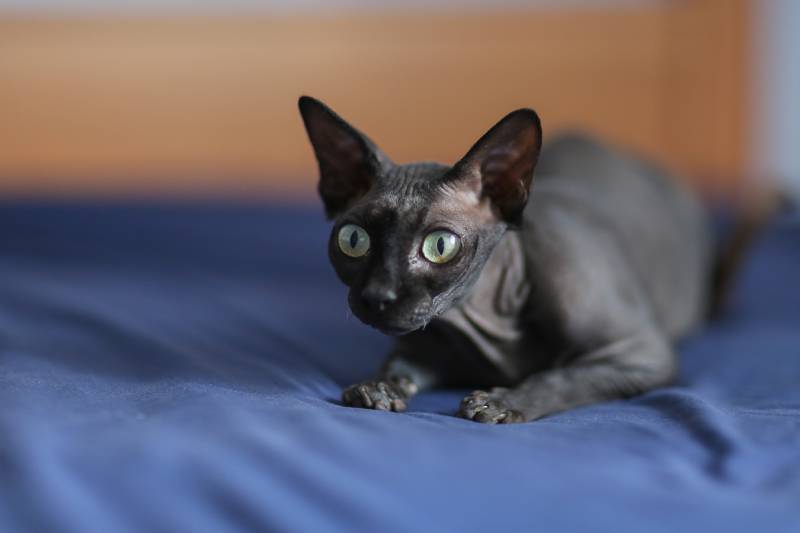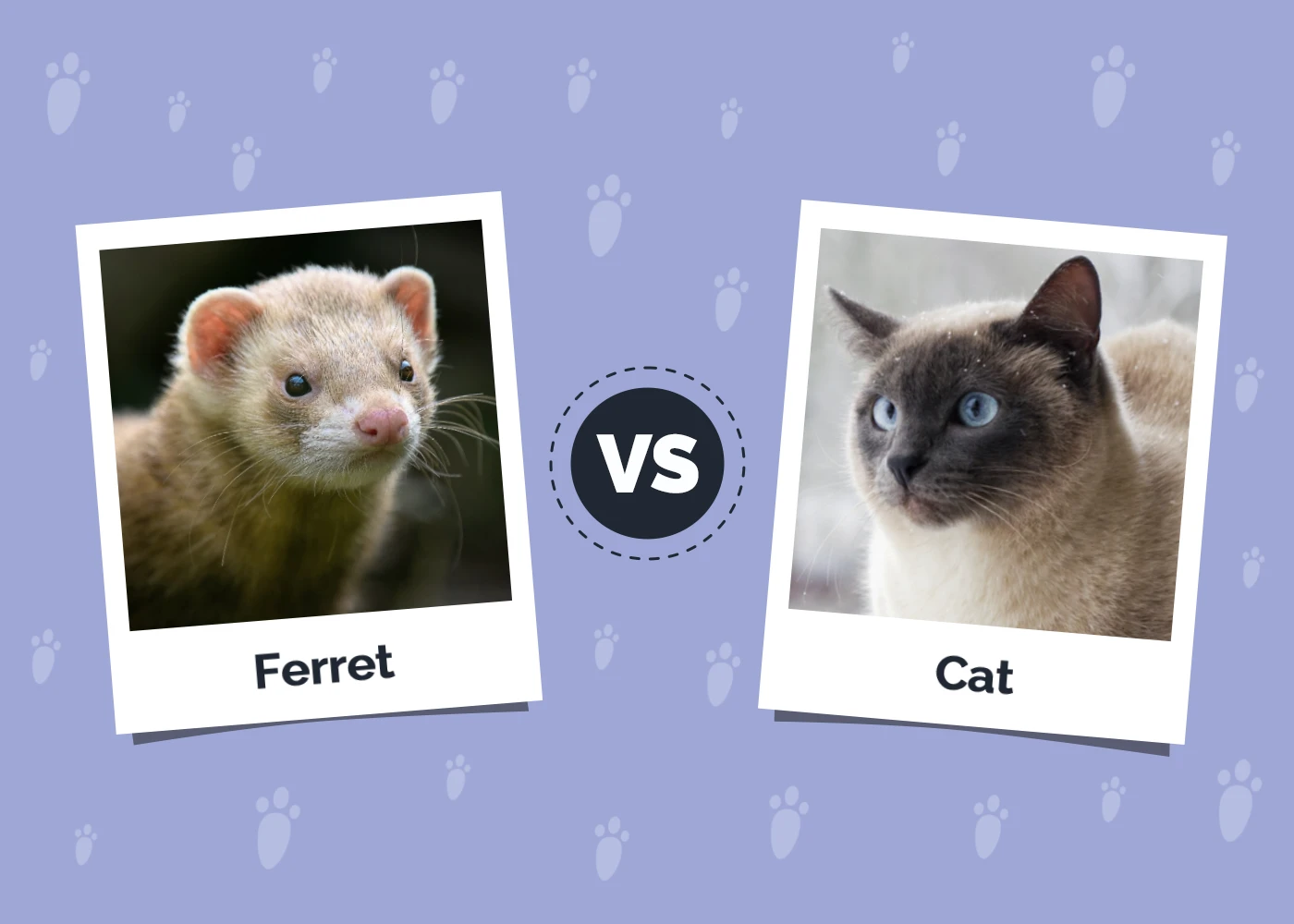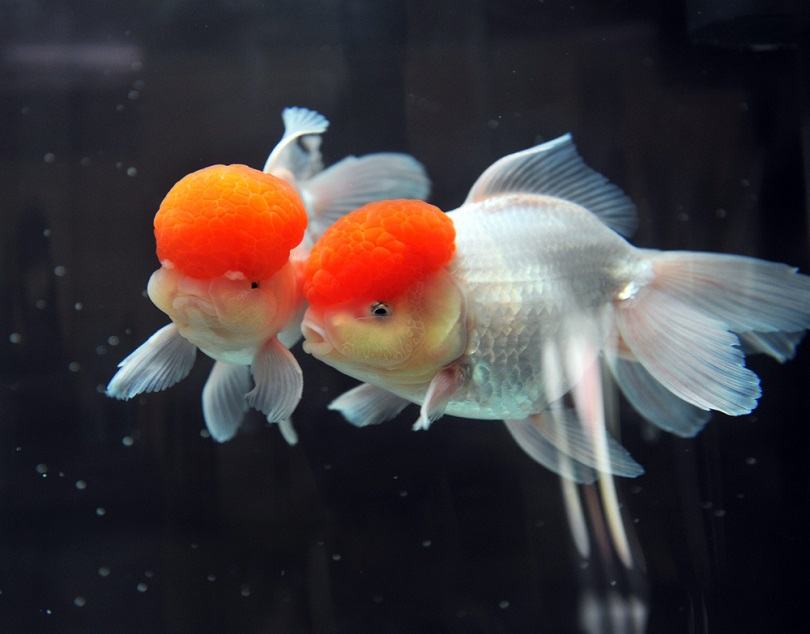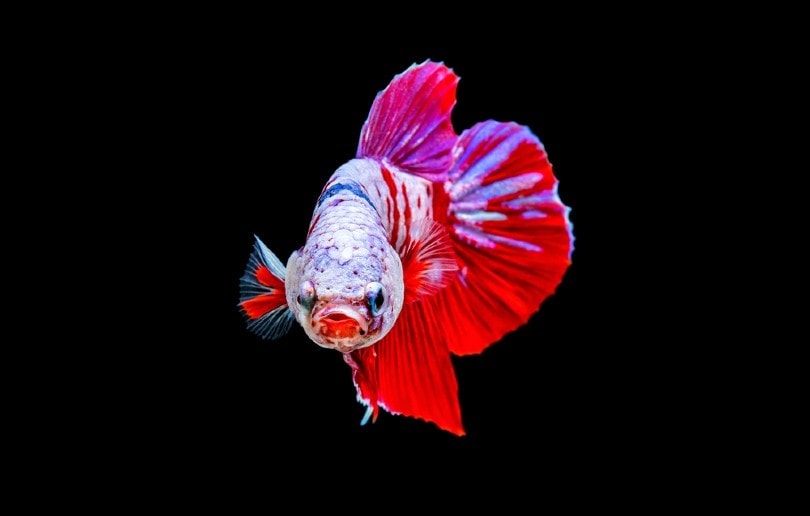How to Treat Gingivitis in Cats: Vet-Approved Causes, Signs, & Treatments

Updated on
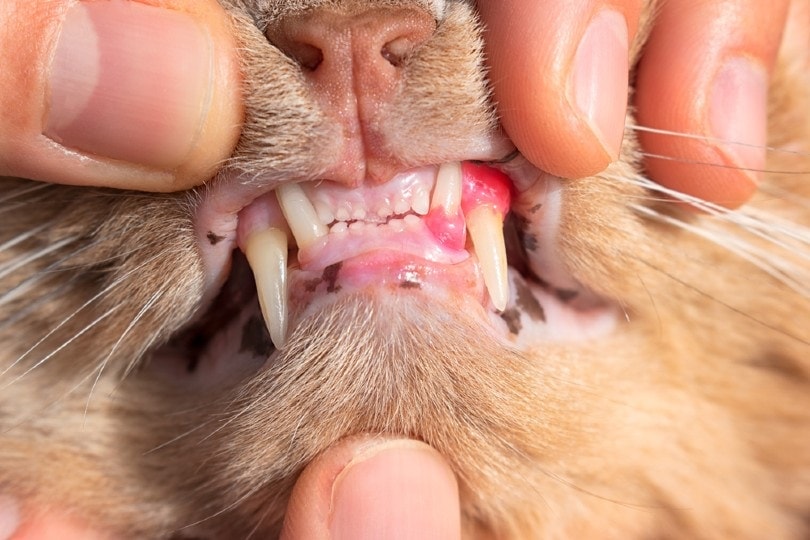
Click to Skip Ahead
Between 50% and 90% of cats over 4 years old suffer from some form of dental disease. Gingivitis or gum inflammation is one of the most common dental diseases, and it can affect cats of all ages. Cases can range from mild to severe. But if not treated, it will cause pain and discomfort for your cat as well as lead the way to more serious dental diseases, including periodontitis.
If gingivitis reaches the point of progressing to periodontitis, it can’t be reversed. If your cat has gingivitis, it is important to treat it immediately. But how are you to know if your cat might have gingivitis? We’ll explain the causes and signs of gingivitis in this article, as well as how to treat it so that hopefully you can get in front of this problem before it becomes serious.
 What Is Gingivitis?
What Is Gingivitis?
Before we get into what causes gingivitis, it is necessary to know what exactly gingivitis is and why it causes so many problems for cats. Gingivitis is a condition that results in inflammation of your cat’s gums. The gums may become red and swollen, and your cat will experience pain when eating.
Gingivitis can be brought about due to poor oral hygiene, viral disease, or other infectious disease, or it can coincide with and be brought about by other diseases. Some of the diseases that can lead the way to gingivitis include feline immunodeficiency virus, feline leukemia virus, feline diabetes, auto-immune disease, or even severe kidney disease, often leading to inflammation of the mouth in general called stomatitis. But whatever the reason that your cat developed gingivitis, early detection and treatment are important to keep the condition from worsening.
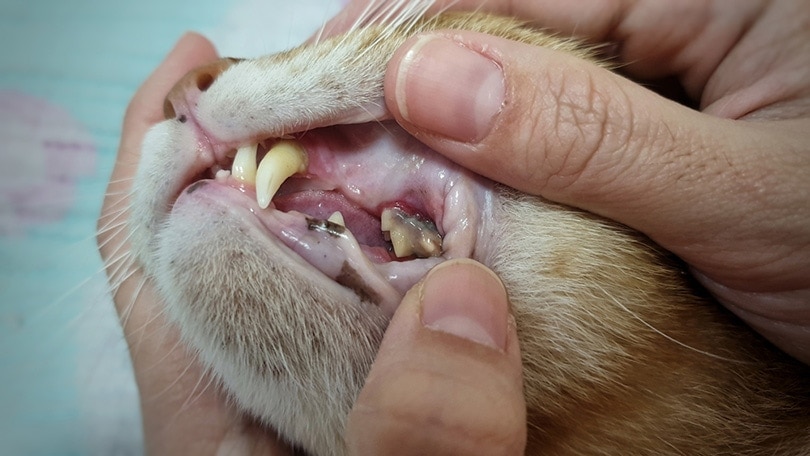
What Causes Gingivitis?
The most common cause of gingivitis is plaque buildup on the teeth. Plaque is essentially a film that lies on the surface of the teeth and can serve as a home for bacteria. Some of these bacteria are believed to be good in cats with appropriate oral health, but there are some that may be harmful as well and will activate the cat’s immune system, leading to inflammation. The problem lies with the accumulation of bacteria as a result of the plaque not being removed from the teeth often enough, migrating deeper where the gum and base of the tooth meet, causing the immune system to react.
1. Lack of Dental Care
When plaque isn’t removed, it migrates toward the gums as more plaque is produced. This allows the plaque and bacteria to eventually start to move underneath the gum line, causing inflammation and infection. As a result, an immune response is triggered inside the cat’s body as it tries to fight off the infection. This leads to the gums becoming inflamed.
The reason that gingivitis can become more severe if not treated is that when bacteria get underneath a cat’s gums, they can start to destroy the cells and tissues that connect the gums to the teeth. This can eventually lead to both the teeth and gums weakening, resulting in periodontitis.
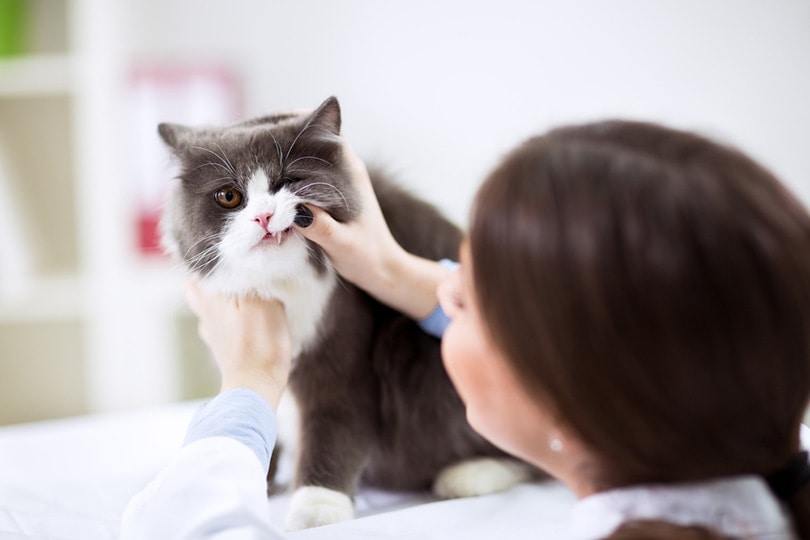
2. Illnesses
Although poor oral health is the most common cause of plaque buildup resulting in gingivitis, it is not the only cause. Infections, organ system disease, autoimmune diseases, and tooth overcrowding can all cause more plaque to build on a cat’s teeth.
3. Breed
Some breeds of cats are also more susceptible to gingivitis than others, including cats with short faces, such as Persians.
Finally, cats that have overbites, underbites, fractured teeth, malocclusion or other teeth abnormalities are also at a greater risk of developing gingivitis because plaque can get trapped in places where it is hard to remove.
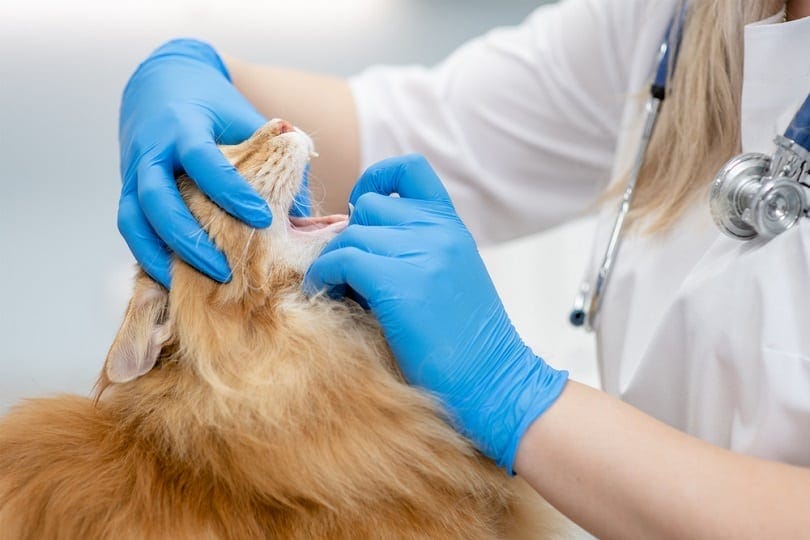
What Are the Signs of Gingivitis in Cats?
The most obvious signs of gingivitis to look for include redness, pain, drooling, and swelling of the gums. But unless we’re already giving our cats regular dental care, how many of us look inside their mouth unless we suspect that something is wrong?
With that being said, there are signs that you may be able to spot that can tell you that you probably should check your cat’s gums. Cats with mild cases of gingivitis may experience bad breath or excessive drooling as a result of the buildup of plaque and inflammation. They may also express a general sense of discomfort or seem like they just don’t feel good. Some cats may isolate themselves as a result. Look for other unusual changes in behavior or eating patterns as well. Some cats may also refuse to eat or eat less than they normally would depending on how severe the disease is.
In some cases, your cat may prefer soft cat food because hard food is more difficult or painful for them to chew. Your cat may also begin to lose weight as a result of not eating or eating less than normal. If you haven’t looked at your cat’s gums and have noticed any of the signs above, check them immediately. Any hint of gum inflammation is a surefire sign that there is some dental issue going on with your cat, most likely gingivitis.
How to Treat Gingivitis
If you suspect that your cat indeed does have gingivitis, it is imperative to take them to the veterinarian to get a diagnosis that can verify your suspicions and get to the root cause of the gingivitis. If it is caught early enough, most of the time even severe cases of gingivitis can be successfully managed, although the issue is likely to persist for the duration of the cat’s life.
If the gingivitis is still a mild case, your veterinarian will likely prescribe antibiotics for your cat in order to first treat the infection, and painkillers to make your cat more comfortable. But even with antibiotics, gingivitis could still come back if the plaque is not removed. Your vet may also recommend that you clean your cat’s teeth at home by using chlorhexidine rinses if the cat will tolerate it, while waiting for the dental appointment.
In most cases, your vet will have to anesthetize your cat in order to remove the plaque buildup. If the plaque is already present, there is nothing you can do about it by brushing, as it’s too firm and you will just end up making your cat sore. Brushing your cat’s teeth can prevent plaque buildup but it cannot treat it if it’s already present.
If your cat has any underlying dental problems, such as an overbite, underbite, or tooth crowding, some teeth may have to be removed if that turns out to be the cause of the gingivitis, or if they have irreversible lesions that will cause mouth pain. Finally, if your vet determines that the gingivitis is being caused by an underlying medical condition, they may prescribe daily medicine for your cat to take.
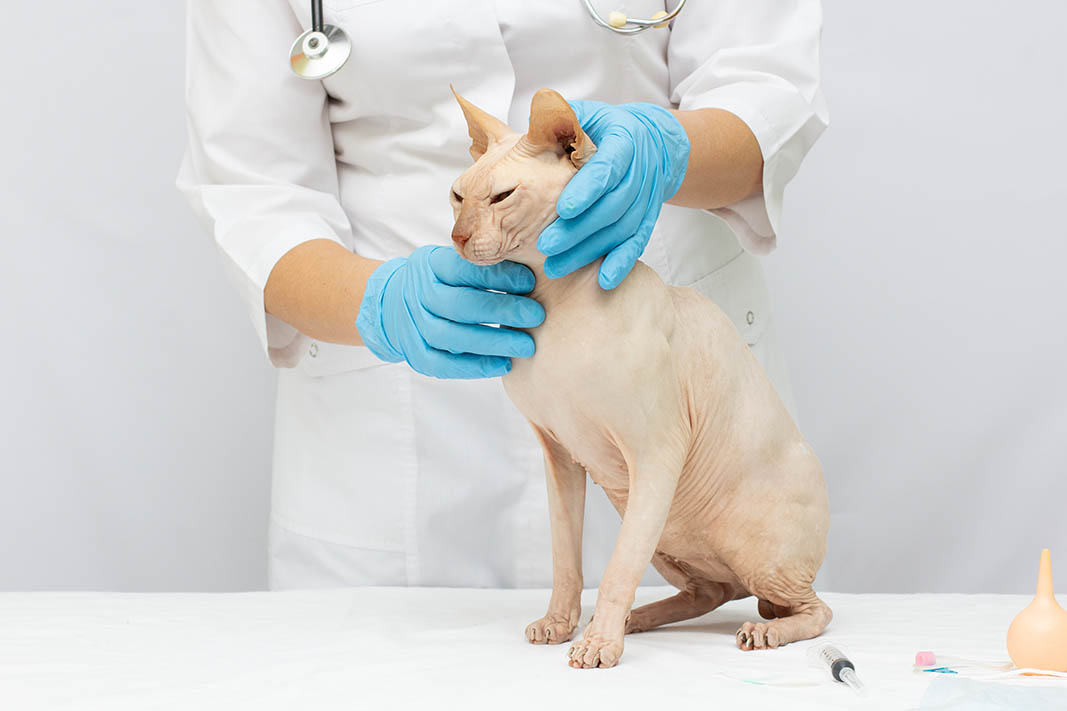
How to Prevent Gingivitis
Whether your cat has had gingivitis before and you’re trying to keep it from coming back, or you’re trying to stop gingivitis from occurring altogether, it’s important to clean your cat’s teeth on a regular basis. The easiest way to do this is by brushing your cat’s teeth at home, but you can also schedule regular teeth cleanings with your vet.
When brushing your cat’s teeth yourself, it is important to have the appropriate products. For example, you don’t want to use a toothbrush and toothpaste designed for humans. A human toothbrush is often too large and will be ineffective. Toothpaste designed for humans often contains ingredients that are toxic to cats. Instead, you will want to use a cat toothbrush that has a smaller head on it designed to fit into your cat’s mouth.
Cat toothpaste contains ingredients that are safe for cats, and it also contains chicken or other protein flavors to make it more appealing for your cat. If you’ve never brushed your cat’s teeth before, you don’t want to just go in all at once and try to do it. It is important to slowly introduce your cat to having their teeth brushed so that they can get used to the idea. Here’s how to do it.
1. Introduce Your Cat to the Toothpaste
To do this, you should first put a little of the toothpaste onto a table or somewhere that your cat can find it. Let them lick the toothpaste so that they learn that it tastes good.
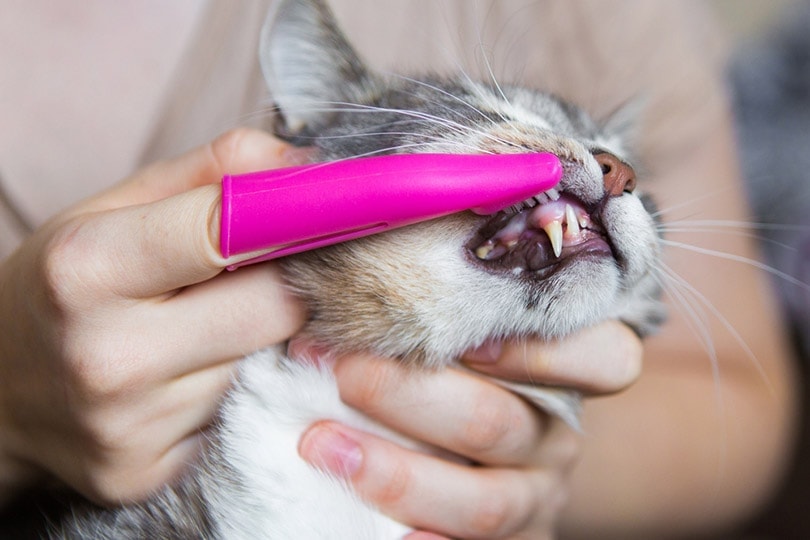
2. Introduce Your Cat to the Motions of Having Their Teeth Brushed
Next, place some wet food, tuna, or another wet food that is safe for your cat to lick onto your finger. Let your cat lick it off your finger, then gently rub your cat’s gums and teeth while they’re licking the food. Reward them with a treat. You may have to do this several times before your cat will be comfortable letting you touch their mouth. Once your cat is used to it, try placing the toothpaste on your finger instead.
3. Introduce Your Cat to the Toothbrush
Place a little toothpaste onto the toothbrush and place it in front of your cat. Let them lick the toothpaste off the brush. Once your cat has become used to that, pick the toothbrush up, place more toothpaste on it, and hold it up to your cat’s mouth. Let them lick the toothpaste off the brush with you holding it.
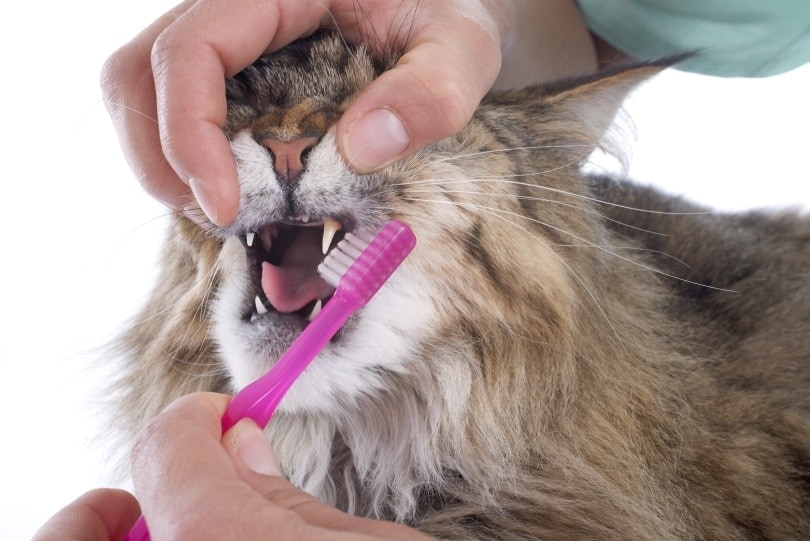
4. Brush Your Cat’s Teeth
If not treated, gingivitis can lead to more serious health conditions for your cat, including periodontitis, which can weaken your cat’s teeth and make it painful and hard for them to eat at all. By keeping your cat’s teeth clean, as well as watching for any unusual changes in behavior and eating habits, you should be able to catch or prevent gingivitis before it becomes a serious problem.
 Final Thoughts
Final Thoughts
If not treated, gingivitis can lead to more serious health conditions for your cat, including periodontitis which can weaken your cat’s teeth and make it hard for him to eat at all. By keeping your cat’s teeth clean, as well as watching for any unusual changes in behavior and eating habits, you should be able to catch or prevent gingivitis before it becomes a serious problem.
See also:
Featured Image Credit: Yaya Photos, Shutterstock

 What Is Gingivitis?
What Is Gingivitis?

